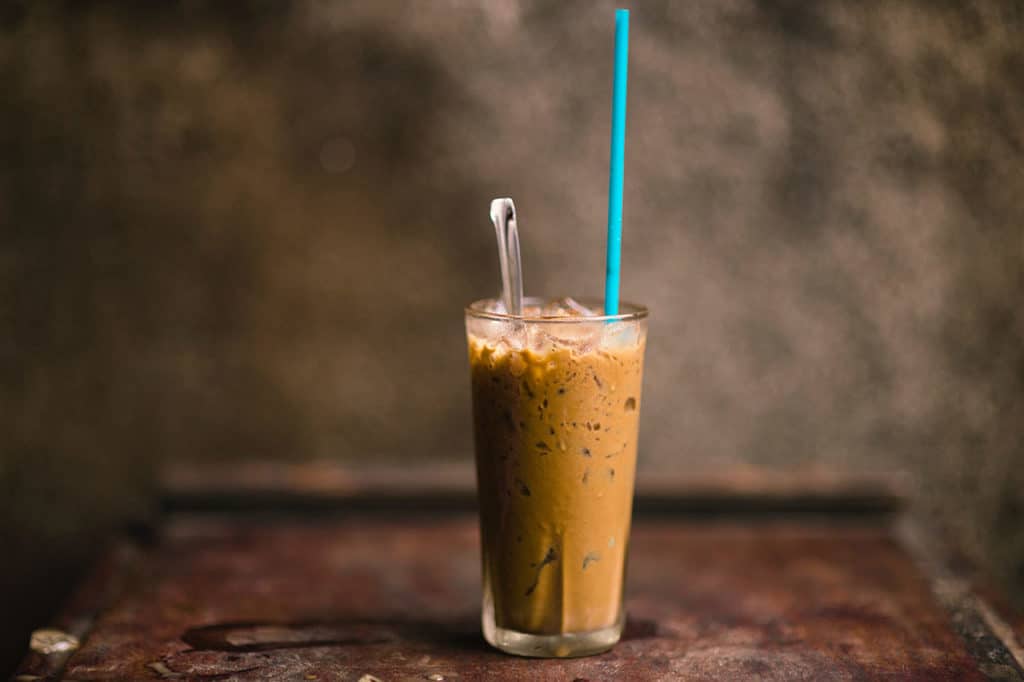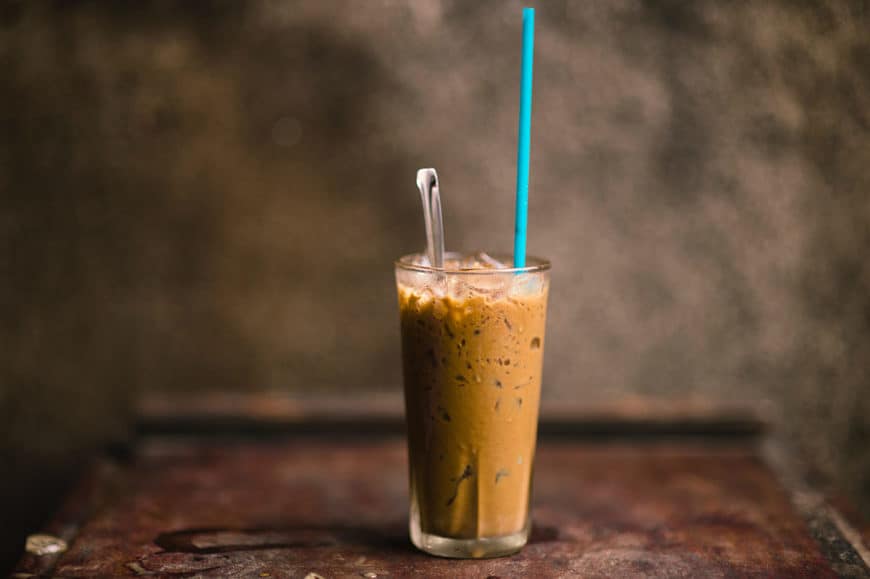
If you’re wanting a coffee that’s bold, sweet, and refreshingly creamy, Thai Iced Coffee—known as Oliang in Thailand—is your next obsession. This iconic drink is a staple on Thailand’s bustling streets, from vibrant Bangkok markets to beachside stalls, offering a perfect balance of robust coffee and sugary decadence. Whether you’ve tasted it abroad or are discovering it for the first time, making Thai Iced Coffee at home is surprisingly simple and endlessly customizable.
In this guide, we’ll walk you through an authentic recipe, explore its fascinating origins, and share tips to ensure your coffee captures the true Thai experience.
Why Thai Iced Coffee Stands Out
Thai Iced Coffee isn’t your average iced latte. Its dark, chocolatey flavor comes from a unique blend of coffee and roasted grains, often mixed with ingredients like soybeans, corn, or sesame seeds. Sweetened condensed milk adds a luxurious creaminess, while a touch of evaporated milk or heavy cream creates that signature layered look.
The result is a drink that’s strong enough to stand up to Thailand’s tropical heat yet sweet enough to feel like a dessert. Best of all, you can tweak the sweetness and strength to suit your taste, making it a versatile treat for morning pick-me-ups or after-dinner sips.
Authentic Thai Iced Coffee Recipe
Crafting a traditional Thai Iced Coffee at home requires just a few ingredients and minimal equipment. While a traditional Thai coffee sock (tung tom kah fe) adds authenticity, you can use a French press or drip brewer with equally delicious results. Here’s how to make a single 16-ounce serving that rivals any Thai street vendor’s creation.
Ingredients
The following table lists the essential ingredients and optional additions for an authentic Thai Iced Coffee, along with notes on their role in the recipe.
| Ingredient | Quantity | Purpose |
|---|---|---|
| Thai Oliang coffee powder (e.g., Pantainorasingh brand) | 3 tablespoons | Provides the authentic dark, robust flavor with roasted grains and seeds. |
| Hot water (just off boil) | 1 cup (8 ounces) | Brews the coffee to extract its bold flavor. |
| Sweetened condensed milk | 2–4 tablespoons | Adds sweetness and creamy texture; adjust to taste. |
| Evaporated milk or heavy cream | 1–2 tablespoons | Creates a smooth, layered topping for visual appeal and richness. |
| Ice cubes | Enough to fill a 16-oz glass | Chills the drink and balances the strong coffee and sweetness. |
| Pinch of salt | 1/8 teaspoon | Enhances sweetness and balances flavors (optional but traditional). |
| Ground cardamom (optional) | 1/4 teaspoon | Adds a warm, spicy note for extra complexity, if desired. |
| Almond or vanilla extract (optional) | 1/4 teaspoon | Enhances sweetness with a subtle flavor boost, if desired. |
Note: Pantainorasingh Oliang powder, available at Asian markets or online, contains 50% coffee, 25% corn, 20% soybean, and 5% sesame seeds, giving it the distinctive Thai flavor. If unavailable, use a dark roast coffee and consider adding a pinch of ground cardamom for authenticity.
Instructions
- Brew the Coffee: Place 3 tablespoons of Oliang powder in a Thai coffee sock set over a heatproof carafe or jug. Slowly pour 1 cup of hot water (just off boil) through the sock, allowing the coffee to drip through. If using a French press, combine the coffee and water, steep for 5–10 minutes, then press. For a drip brewer, place the coffee in a filter and brew as usual. If adding cardamom, mix it with the coffee grounds before brewing for a spiced twist.
- Prepare the Sweet Base: In a separate 16-ounce glass, combine 2–4 tablespoons of sweetened condensed milk and a pinch of salt. Stir until smooth. The salt enhances the sweetness, but you can skip it if preferred. Add a handful of ice cubes to the glass.
- Combine Coffee and Sweet Base: Once brewed, pour the hot coffee into the glass with the sweetened condensed milk and ice. Stir gently until the milk dissolves and the coffee cools slightly. The ice will melt a bit, diluting the strong brew to the perfect strength.
- Add the Final Touch: Slowly pour 1–2 tablespoons of evaporated milk or heavy cream over the back of a spoon to create a layered effect on top of the coffee. This step is optional but adds visual appeal and extra creaminess. If using almond or vanilla extract, stir it in now for a flavor boost.
- Serve and Enjoy: Sip your Thai Iced Coffee as is, or stir to blend the layers for a uniform taste. The drink is traditionally super sweet and strong to account for ice melt, so adjust the condensed milk to your preference.
Tips for the Perfect Thai Iced Coffee
To elevate your coffee game, consider these pro tips. For an authentic experience, stick with Oliang powder, as its grainy blend is what sets Thai coffee apart from standard dark roasts. If you’re using regular coffee, opt for a robusta or dark-roasted Arabica to mimic the bold, slightly burnt flavor. Brewing stronger than usual ensures the coffee holds up against the sweetness and ice. For a fun twist, freeze leftover coffee in ice cube trays to prevent dilution as the drink sits. If you’re feeling adventurous, add a splash of Kahlúa or Baileys for a boozy after-dinner version, as suggested by some recipes online.
The Origins and Cultural Significance of Thai Iced Coffee
Thai Iced Coffee, or Oliang, has a surprisingly multicultural backstory. The name derives from the Teochew dialect, spoken by ethnic Chinese immigrants from southern China’s Guangdong province who settled in Thailand during the early 20th century.
In Teochew, “o” means “black” and “liang” means “cool,” perfectly describing this dark, chilled drink. These immigrants brought their coffee-drinking habits, blending robusta coffee with local grains like corn, soybeans, and sesame seeds to stretch the expensive coffee beans—a practice likely born out of necessity during times of scarcity.
This grain-coffee mix became the hallmark of Oliang, distinguishing it from purer coffee blends. Street vendors across Thailand perfected the recipe, brewing it through a cloth filter called a tung tom kah fe and sweetening it with condensed milk, a shelf-stable staple in a country where fresh milk was once scarce. The result was a drink that was both affordable and crave-worthy, cementing its place in Thai culture. Today, Oliang remains a beloved street food staple, though modern cafés in urban areas like Bangkok cater to younger crowds with pour-over brews and Starbucks-style drinks.
Interestingly, Thai Iced Coffee shares similarities with Vietnamese Iced Coffee (cà phê sữa đá), which also uses condensed milk and a slow-drip filter. Both drinks likely trace back to Chinese immigrant influences, adapted to local tastes and ingredients. The use of pre-mixed coffee powders, like Pantainorasingh, reflects a practical approach to coffee-making in Southeast Asia, where flavor and affordability trump purism.
Variations and Modern Twists
While the classic recipe is hard to beat, Thai Iced Coffee is endlessly adaptable. Some recipes incorporate spices like cardamom, cinnamon, or allspice for a warm, aromatic kick, especially when brewed hot for cooler days.
Others swap condensed milk for coconut milk to make it dairy-free, adding a tropical flair. For a lighter version, reduce the condensed milk and supplement with evaporated milk or half-and-half to maintain creaminess without overwhelming sweetness. Instant coffee, like Waka’s Arabica-based granules, can simplify the process for beginners, though it lacks the grainy depth of Oliang.
For a decadent treat, top your coffee with whipped cream or a sprinkle of cinnamon, as seen in some creative recipes. If you’re hosting friends, serve it with a drizzle of caramel or alongside Thai-inspired desserts like mango sticky rice to complete the experience. The beauty of Thai Iced Coffee lies in its flexibility—make it as sweet, creamy, or spiced as you like.
Final Thoughts
Thai Iced Coffee is more than just a drink—it’s a cultural bridge, blending Chinese heritage with Thai ingenuity. Its bold flavor, creamy texture, and customizable sweetness make it a crowd-pleaser for coffee enthusiasts everywhere. Whether you’re sipping it on a sweltering summer day or spiking it for a cozy nightcap, this recipe delivers a taste of Thailand right in your kitchen. So, grab some Oliang powder, crank up the AC, and whip up a glass of this sweet, caffeinated magic. Your taste buds will thank you.
Have you tried Thai Iced Coffee before? Let us know your favorite tweaks or serving ideas in the comments below, and don’t forget to share this recipe with your coffee-loving friends!

